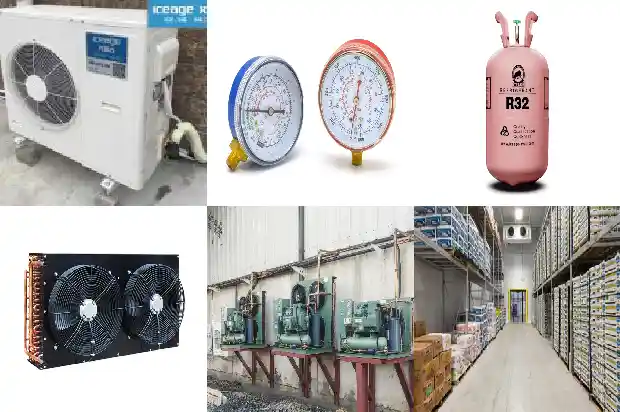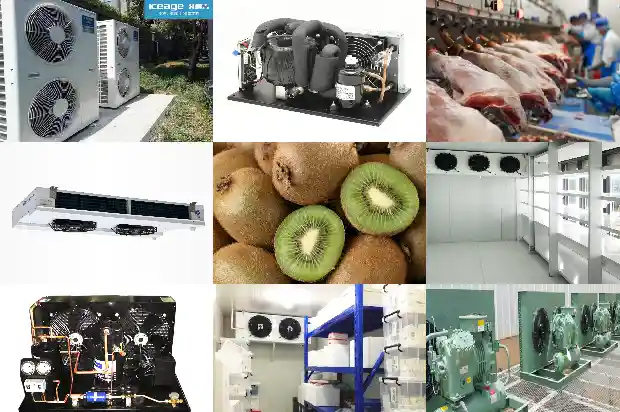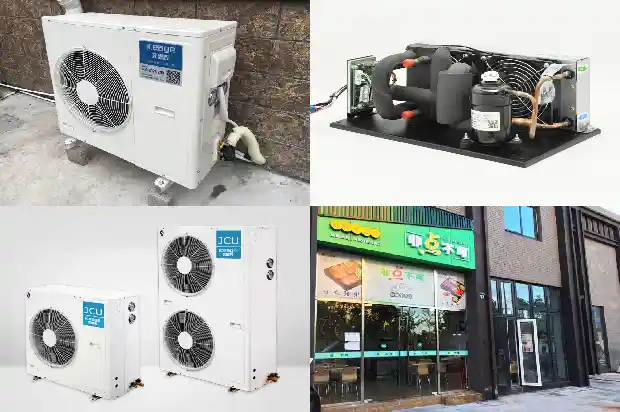Do You Really Understand Automotive Air Conditioning Refrigerant and Refrigeration Oil?
2025-04-11
The car air conditioner doesn't cool, so you just need to add refrigerant? Today, let's learn about the knowledge of automotive air conditioning refrigerant and refrigeration oil.
The Use of Automotive Air Conditioning Refrigerant
I.
Use genuine refrigerant
Genuine refrigerant has strict requirements in various performance indicators such as water content and impurities. Using counterfeit and inferior refrigerant may cause failures in the automotive air conditioning system.
II. Charge the Air Conditioner with Refrigerant Correctly
The vehicle manufacturer has strict regulations on the refrigerant charging amount of the air conditioning system, and the amount of refrigerant charged must be carried out strictly in accordance with the regulations of the vehicle manufacturer. The following provides the specific charging method:
The Use of Automotive Air Conditioning Refrigerant
I.

Use genuine refrigerant
Genuine refrigerant has strict requirements in various performance indicators such as water content and impurities. Using counterfeit and inferior refrigerant may cause failures in the automotive air conditioning system.
II. Charge the Air Conditioner with Refrigerant Correctly
The vehicle manufacturer has strict regulations on the refrigerant charging amount of the air conditioning system, and the amount of refrigerant charged must be carried out strictly in accordance with the regulations of the vehicle manufacturer. The following provides the specific charging method:
- Step-by-step Tutorial for Charging Refrigerant from the Low-pressure End of the Air Conditioner
(1) Characteristics and Precautions of Charging from the Low-pressure End
Charging from the low-pressure end is slow and is suitable for use when replenishing the refrigerant in the air conditioning system.
(2) Charging Steps / Process:
Gaseous refrigerant can be charged into the low-pressure side of the refrigeration system through the low-pressure manual valve on the manifold pressure gauge.
① Connect the manifold pressure gauge properly.
② Open the refrigerant tank, loosen the nut of the middle injection hose on the manifold pressure gauge until you hear the flowing sound of refrigerant vapor, and then tighten the nut to expel the air in the injection hose.
③ Close the manual high-pressure valve, stand the refrigerant bottle upright, start the engine, make the air conditioning compressor run, open the low-pressure manual valve, and let the refrigerant enter the compressor from the low-pressure side. When the pressure value of the system reaches 0.4MPa, close the low-pressure manual valve and the refrigerant tank switch valve.
④ Adjust both the blower switch and the temperature control switch to the maximum.
⑤ Open the manual valve on the manifold pressure gauge again to let the refrigerant continue to enter the refrigeration system until the charging amount reaches the specified value.
⑥ After charging the specified amount of refrigerant into the system, observe from the liquid sight glass to confirm that there are no bubbles and no excessive refrigerant in the system.
⑦ After the charging is completed, close the low-pressure manual valve on the manifold pressure gauge, close the injection valve installed on the refrigerant tank, stop the engine, and remove the manifold pressure gauge. - Step-by-step Tutorial for Charging Refrigerant from the High-pressure End of the Air Conditioner
(1) Characteristics and Precautions of Charging from the High-pressure End
Charging from the high-pressure end is generally used for the first charging, which is relatively safe and fast.
It should be noted that: the engine is in a non-starting state (the compressor stops rotating) during charging, and do not open the low-pressure manual valve on the manifold pressure gauge to avoid hydraulic shock.
(2) Charging Steps / Tutorial
① After evacuating, close the high and low-pressure manual valves.
② Connect one end of the middle hose to the joint of the injection valve of the refrigerant tank, open the opening valve of the refrigerant tank, then loosen the nut at one end of the hose of the manifold pressure gauge, let the gas escape for a few minutes, and then tighten the nut.
③ Open the high-pressure side manual valve to the fully open position and invert the refrigerant tank.
④ Inject the specified amount of liquid refrigerant from the high-pressure side.
⑤ Close the injection valve of the refrigerant tank and the high-pressure manual valve on the manifold pressure gauge.
The Use of Automotive Air Conditioning Refrigeration Oil
Refrigeration oil is the lubricating oil of the automotive air conditioning refrigeration system. When the automotive air conditioning refrigeration system is working, the refrigeration oil moves in the system together with the refrigerant, mainly playing functions such as lubrication, sealing, cooling, and energy regulation.
I. Why Should the Refrigeration Oil Be Replaced in a Timely Manner? - Extend the service life of the compressor and seals;
- Reduce the friction loss of the compressor and lower the noise;
- Replace the refrigeration oil at the same time when charging the refrigerant for better refrigeration effect.
II. Will Not Replacing the Refrigeration Oil for a Long Time Increase the Maintenance Cost?
Although the refrigeration oil is not like the engine oil, which has a short replacement cycle due to frequent use, if it is used for too long, situations such as deterioration and loss will also occur. In mild cases, it will affect the normal working conditions of the air conditioning refrigeration system, and in severe cases, it will lead to damage to the core components. In fact, the damage of the air conditioning compressor is mostly the result of the combined effects of impurities, sludge, moisture, etc. generated in the air conditioning pipeline due to the deterioration or loss of the refrigeration oil. Once the compressor has a scored cylinder, the entire air conditioning system will need to be replaced, increasing the maintenance cost!
Carrying out the maintenance of the air conditioning system is not only costly, time-consuming, and labor-intensive.
In a more serious situation, due to the complexity of the air conditioning system, even if the core components are repaired or replaced, there is still a high probability that the air conditioning system cannot be restored to its best working state.
So, be sure to replace the refrigeration oil in a timely manner. The standard reference is to replace it when the car has been driven for 3 years or 60,000 kilometers, and then replace it every two years.
III. How to Use the Refrigeration Oil? - Use the Refrigeration Oil of the Correct Grade
In the air conditioning system, the refrigerant and the refrigeration oil need to be completely miscible so as to ensure that the compressor can be continuously lubricated. Mineral oil is miscible with R12 but completely immiscible with R134a; various compressors use different types and grades of refrigeration oil, and the regulations should be strictly observed during use and cannot be confused, otherwise, the compressor will be damaged and the system will malfunction.
The refrigeration oil has strict performance indicator requirements in various aspects such as water content, impurities, and lubrication performance. It is strictly prohibited to use unqualified refrigeration oil.
In addition, please note that: since the refrigeration oil has a certain water absorption capacity, even if it is initially qualified refrigeration oil, if it is exposed to the air for a certain period of time, resulting in excessive water in the oil, after being added to the system, it will cause system failures. - Correct Charging Amount
The air conditioning system has strict regulations on the charging amount of the refrigeration oil. If there is too much or too little refrigeration oil, it will cause failures in the air conditioning system.
When repairing the air conditioning system, it is necessary to pour out or add refrigeration oil according to the situation of the replaced parts.
For example, when only replacing the compressor, a certain amount of refrigeration oil inside the newly replaced compressor needs to be poured out.
When only replacing the condenser, a certain amount of refrigeration oil needs to be added.
It should be noted that some compressors delivered from the factory have already had refrigeration oil added (except for compressors that do not require the addition of refrigeration oil as specifically required by customers). The amount of refrigeration oil added to the compressor is the amount of refrigeration oil that should be added to the entire air conditioning system specified for the air conditioning system supporting this compressor. - Detailed Explanation of the Method for Charging Refrigeration Oil into the Air Conditioner
When replacing the components of the air conditioning system and finding serious leakage in the air conditioning system, refrigeration lubricating oil must be charged.
The charging steps / process of the refrigeration oil are as follows:
① Evacuate the refrigeration system first according to the evacuation method.
② Select a graduated measuring cup and add more refrigeration lubricating oil than the amount to be replenished.
③ Connect the entire system as shown in the figure. Remove the low-pressure hose from one end of the gauge set and put it into the refrigeration oil. The high-pressure hose is still connected to the high-pressure maintenance valve, and the middle hose is still connected to the vacuum pump.
④ Start the vacuum pump and open the high-pressure manual valve, and the refrigeration oil will be slowly sucked into the compressor.
⑤ After charging the refrigeration lubricating oil according to the evacuation method, evacuate the refrigeration system again and charge the refrigerant.
Related Articles
- Principles, Characteristics, Selection and Precautions of Air-cooled Modular Units
- Countermeasures for Common Problems of Defrosting during Winter Heating of Air-cooled Modules
- Precautions for Refrigerant Charging and Maintenance Key Points of R410A Refrigerant Air Conditioners
- How to Choose Between Inverter Air Conditioners and Fixed-frequency Air Conditioners? Let's See What Maintenance Technicians Say
- What Malfunction Does "E2" Indicate on an Air Conditioner?
- Can a Tiny Copper Tube Cause a Multi - Split Air Conditioner to Stop Cooling?
- In - depth Explanation of Large - temperature - difference Ice - storage Air - conditioning Systems
- Comprehensive Insights into Large - Temperature - Difference Ice - storage Air - Conditioning Systems
- Comprehensive Maintenance Guide for Air - Conditioning Hosts, Ducts, Chilled Water, and Cooling Water
- A Summary of 11 Common Faults in Refrigeration and Air Conditioning Systems
- Winter Anti-freezing Measures for Air Conditioning Equipment and Fire Protection Systems
- A Complete Guide to the Operation, Malfunctions and Repair Methods of Dry Screw Refrigeration Compressors!
- In Refrigeration Repair, Analyzing and Handling Three Major Series of Malfunctions - "Blockage", "High Pressure" and "High Discharge Temperature" are Essential!
- How to Properly Remove Ammonia Refrigerant during Refrigeration Parts Repair
- Precautions for Welding Air - conditioner Copper Tubes
- Why Does the Air - conditioner Compressor Stop Running in Less Than 1 Minute?
- How to Solve Practical Problems of Air - conditioner Leakage, Noise and Refrigerant Leakage?
- How to Improve the Energy Efficiency of Air - conditioner Compressors?
